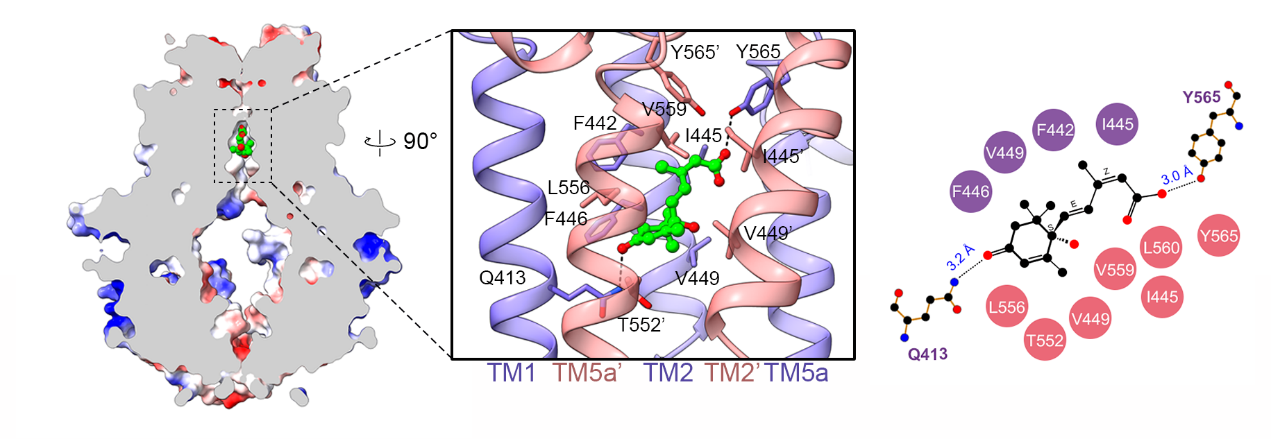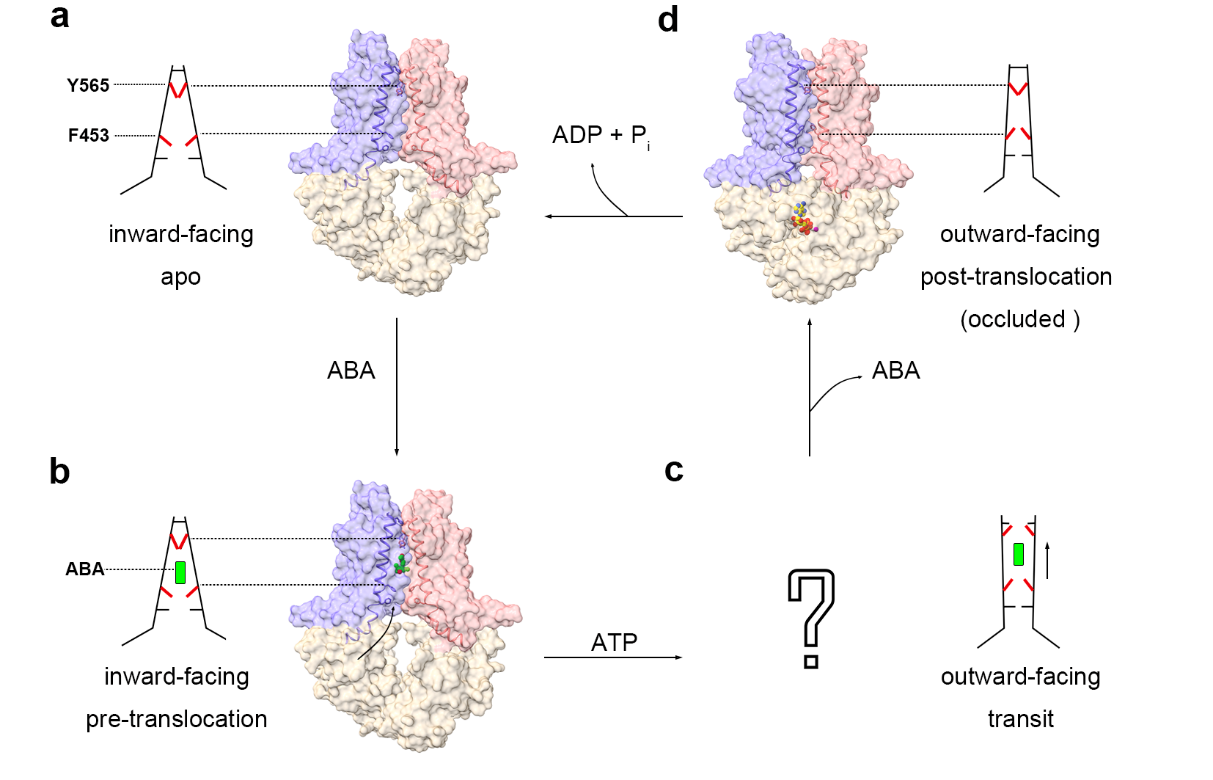Study Reveals Molecular Mechanism Underlying Cross-membrane Transport of Plant Hormone Abscisic Acid
Abscisic acid (ABA) is a key plant hormone produced in response to abiotic stress like drought, salt and etc. ABA is mainly synthesized in roots and vascular tissues and transported to specific sites to exert physiological functions. Several ABA transporters have been identified; however, the molecular mechanism underlying specific binding and cross-membrane transport of ABA remains unknown.
In a recent study published in Nature Plants, researchers reported the structural study of the abscisic acid transporter ABCG25 from Arabidopsis (AtABCG25). In this study, AtABCG25 protein was expressed and purified through heterologous expression, and different 3D structural conformations of AtABCG25, including inward-facing apo conformation (AtABCG25inward-apo), ABA-bound pre-translocation conformation (AtABCG25inward-ABA) and outward-facing occluded conformation with ATP bound (AtABCG25outward), were captured by single-particle cryo-electron microscopy (Figure 1).
Figure 1. Overall structure of AtABCG25 in different conformations
Structural analysis revealed the homodimeric structure of AtABCG25, the binding site of ABA, and the key residues dictate the ABA specific binding (Figure 2). Structural based transport assay and binding analysis further confirmed the structural data.
Figure 2. Specific binding ABA of AtABCG25
Based on the structure analysis, a "gate-flipper" model was proposed to summarize the dynamic process of AtABCG25-mediated ABA cross-membrane transport (Figure 3).
Figure 3. Substrate translocation model of ABCG25
This study represents the first 3D structure of ABA transporter, which not only reveals the molecular mechanism of specific binding and cross-membrane transport of plant hormone ABA, but also provides new insights for the study of plant ABC transporters.
This study was mainly completed by Prof. Peng Zhang group from CAS Center for Excellence in Molecular Plant Sciences through a collaboration with Prof. Zhenguo Chen group from Fudan University. Research was supported by the National Natural Science Foundation of China and the Strategic Priority Project of the Chinese Academy of Sciences.
Link:
https://www.nature.com/articles/s41477-023-01509-7
Contact:
Dr. Zhang Peng, Professor
National Key Laboratory of Plant Molecular Genetics, CAS Center for Excellence in Molecular Plant Sciences, Chinese Academic of Sciences
Email: pengzhang01@cemps.ac.cn


